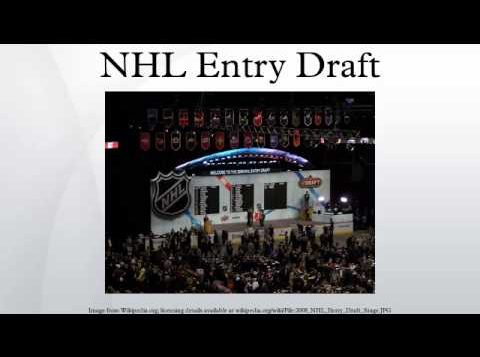This Day in Hockey History – June 5, 1963 – Drafts are for Amateurs
The NHL began in 1917, but it took until 1963, just five years before the NHL doubled in size, for the league to hold an amateur or entry draft. The six teams that existed back then took turns drafting amateur players for the first time at the Queen Elizabeth Hotel in Montreal on June 5, 1963.
Until that time, NHL teams sponsored junior hockey clubs in order to reserve the rights to sign their players. Each NHL team stocked up with many junior clubs to ensure they had many young players to choose from. The other way of obtaining up-and-comers was through a variety of contracts. The infamous C Form secured the player indefinitely. That meant a player needed to be released to skate for anyone else.
President Clarence Campbell was one of those in the NHL that wanted to phase out this system and give all the teams a fairer shot at new talent. During the 1962-63 season, he explained, “I’m trying to work out a system whereby all amateur players who will attain their 17th birthdays before August of each year will be available for drafting by NHL teams in the reverse order of the standing. We’re ultimately hopeful it will produce a uniform opportunity for each team to acquire a star player.” Thus, they developed an amateur draft.
Those eligible for the draft were 16-year-olds who would turn 17 between August 1, 1963 and July 31, 1964. The teams would not be allowed to set up contracts with the players until they turned 18. Then, they would have 72 hours to either sign them or add them to negotiation lists. Teens already playing for sponsored clubs could not be drafted.
The six NHL teams chose their selection order in reverse order of the season’s standings. They would take turns drafting players in the order of Montreal Canadiens, Detroit Red Wings, Boston Bruins, New York Rangers, Chicago Black Hawks, and finally, the Toronto Maple Leafs. Although the draft would have four rounds, Detroit and Chicago passed on the final rounds as prospects dried up.
At the first amateur draft, with most eligible talent already locked into sponsored clubs, only 21 players were drafted. Every single one hailed from Canada. Only five draftees went on to careers in the NHL. Montreal scooped up one by selecting forward Garry Monahan first overall. He began playing for the Canadiens in 1967 and then played for four other teams during his 12-season NHL career. The second player drafted, by Detroit, was forward Peter Mahovlich, the only one from this draft to take home the Stanley Cup. Although he began his NHL career with Detroit during the 1965-66 season, Mahovlich’s four championships came with Montreal during the 1970s. His NHL career ended back at Detroit during the 1980-81 season. Both Monahan and Mahovlich played for the St. Michael’s Juveniles at the time of the draft.
The only draftee, besides Mahovlich, to play in an NHL All-Star Game was defenseman Jim McKenny. Toronto picked him late in the third round, and he played for them from 1965 until 1978, all but one of his NHL seasons. They also chose the other two who made the NHL, centers Walt McKechnie (first-round pick) and Gerry Meehan (fourth-round pick). McKechnie ended up starting his career with the Minnesota North Stars during the 1967-68 season and bounced around teams until 1983. Meehan did not even last the 1968-69 season he started with Toronto before he too shuffled around until the 1978-79 season.
Since the first amateur draft, a few things have changed. Over the 1967-68 season, the NHL phased out the sponsorship of junior clubs and eliminated the contract forms. Players could be drafted upon graduation from junior hockey or signed as a free agent after they turned 20. Until they came of age, the NHL would pay development fees. From the 1968 draft until 1994, the draft order was determined by the previous season’s standings. Since 1995, the draft order has been a lottery for the teams that missed the playoffs. In 1979, the name changed to the NHL Entry Draft so that it could include those who had been connected with the defunct World Hockey Association (WHA). The following year, the draft was open to public viewing, and after another four years, television entered the event.
Additional Sources:
- Mike Commito, Hockey 365: Daily Stories from the Ice (Toronto: Dundurn, 2018), kindle edition.
- https://www.nhl.com/bruins/news/history-of-the-nhl-draft/c-447208
- https://www.nhl.com/hurricanes/news/history-lesson-the-nhl-entry-draft/c-472373
- https://www.hockey-reference.com/draft/NHL_1963_amateur.html














